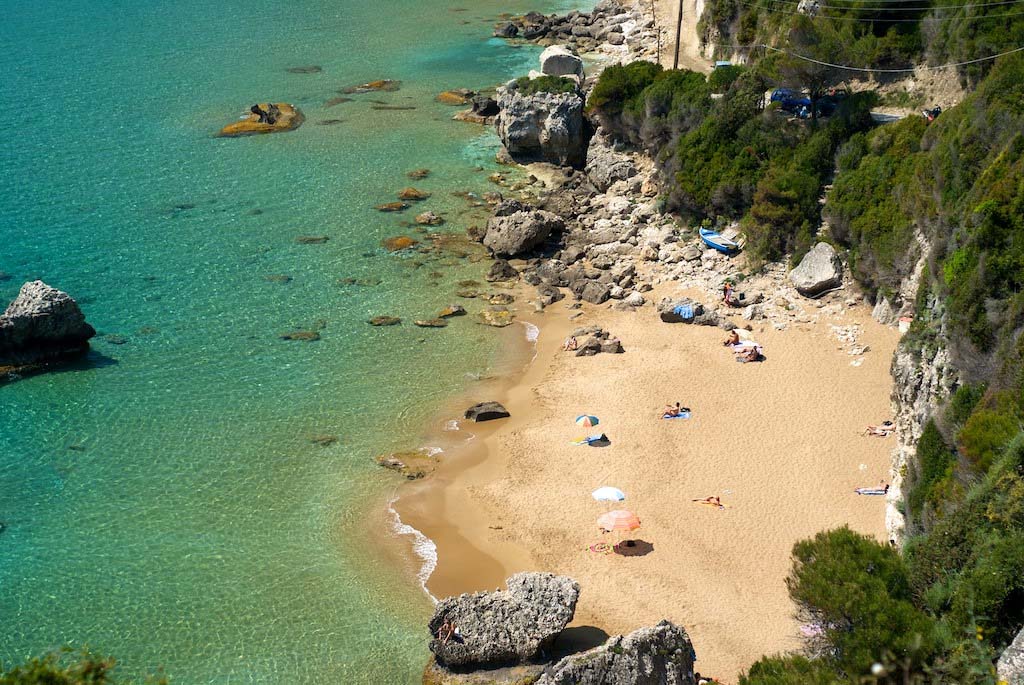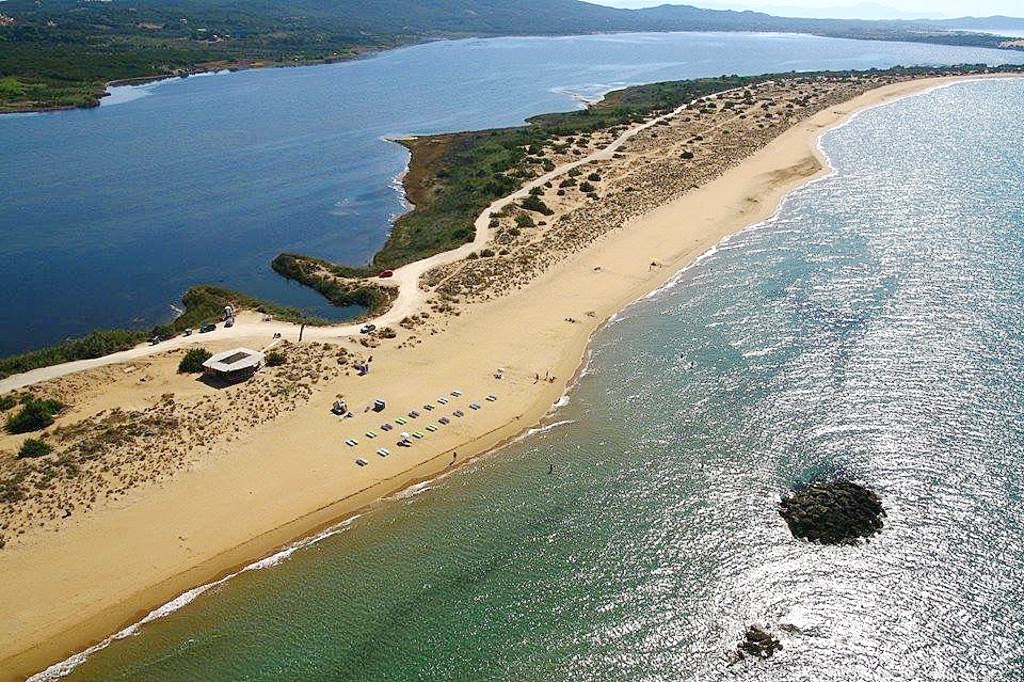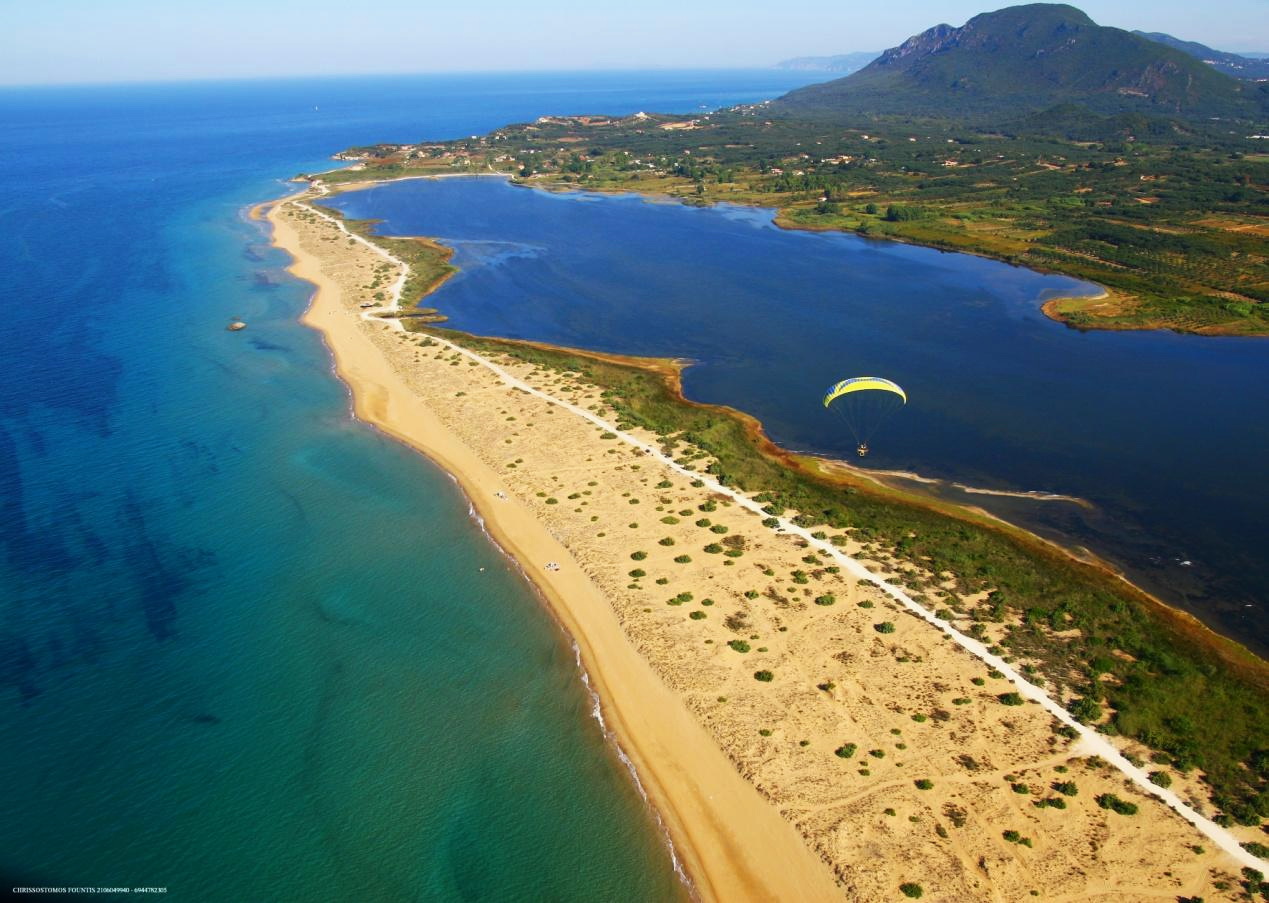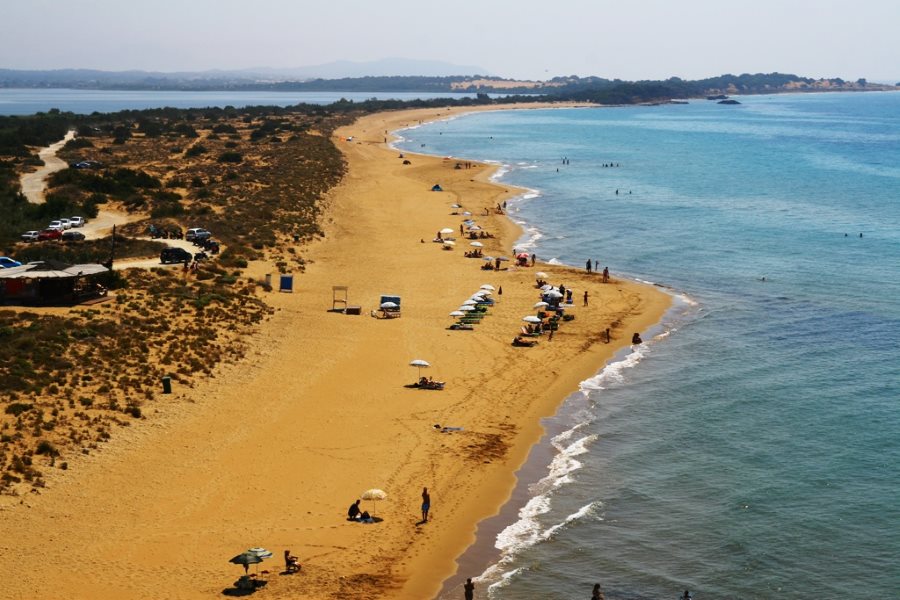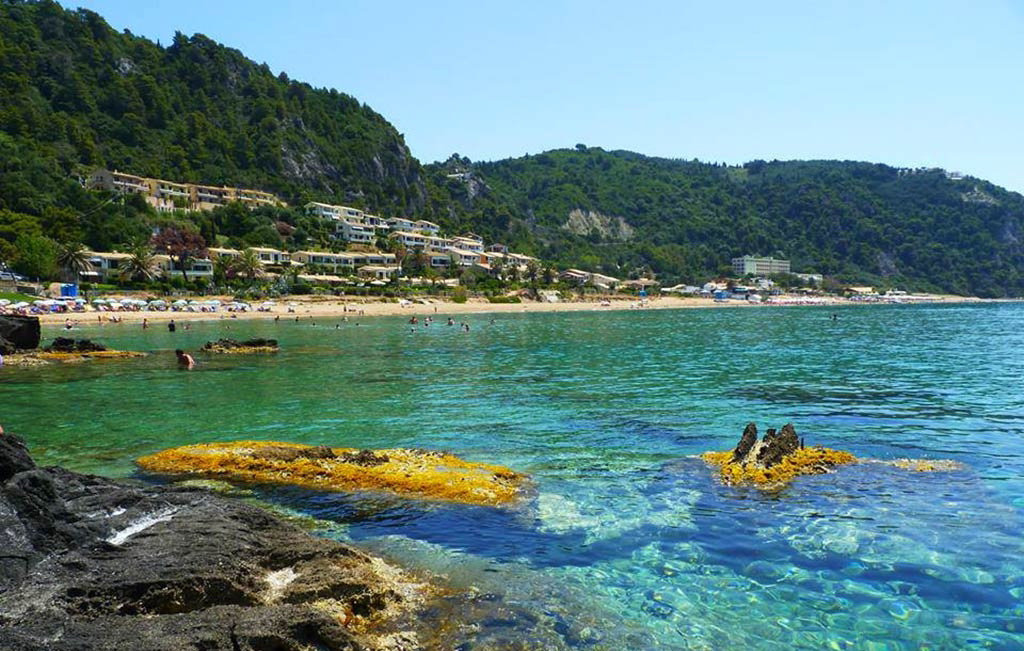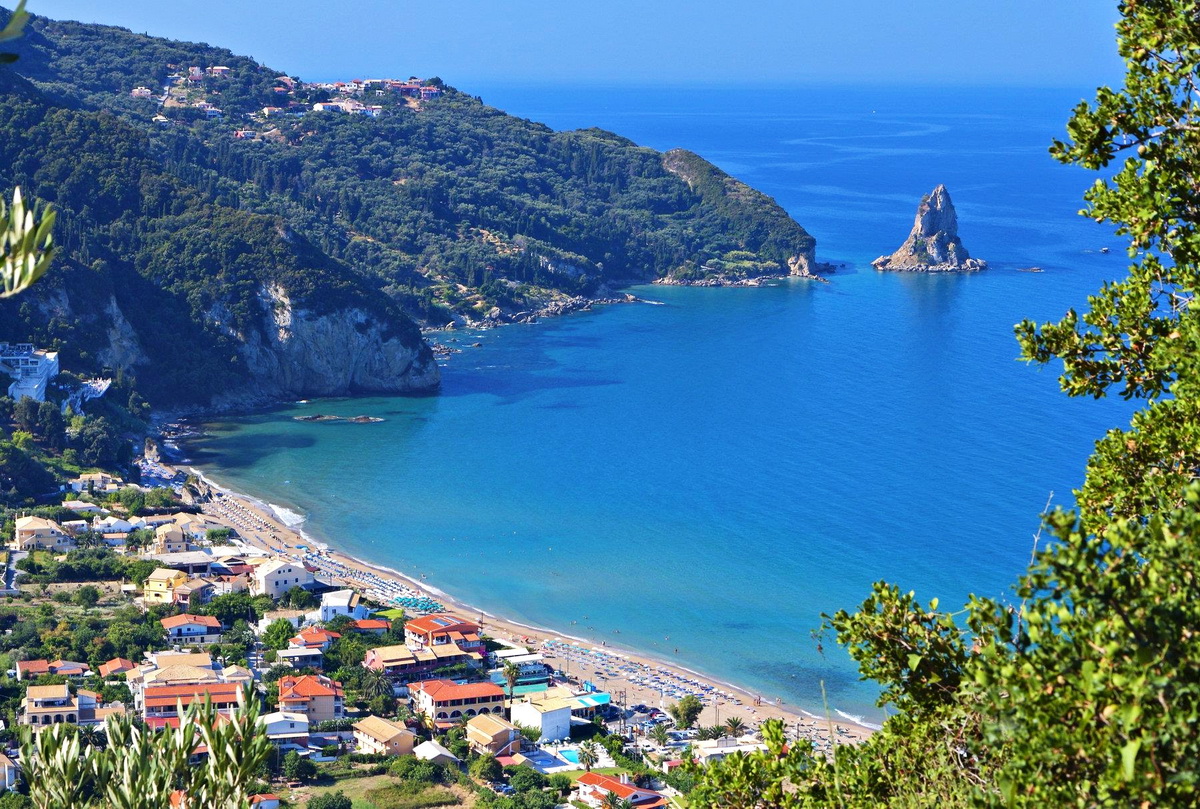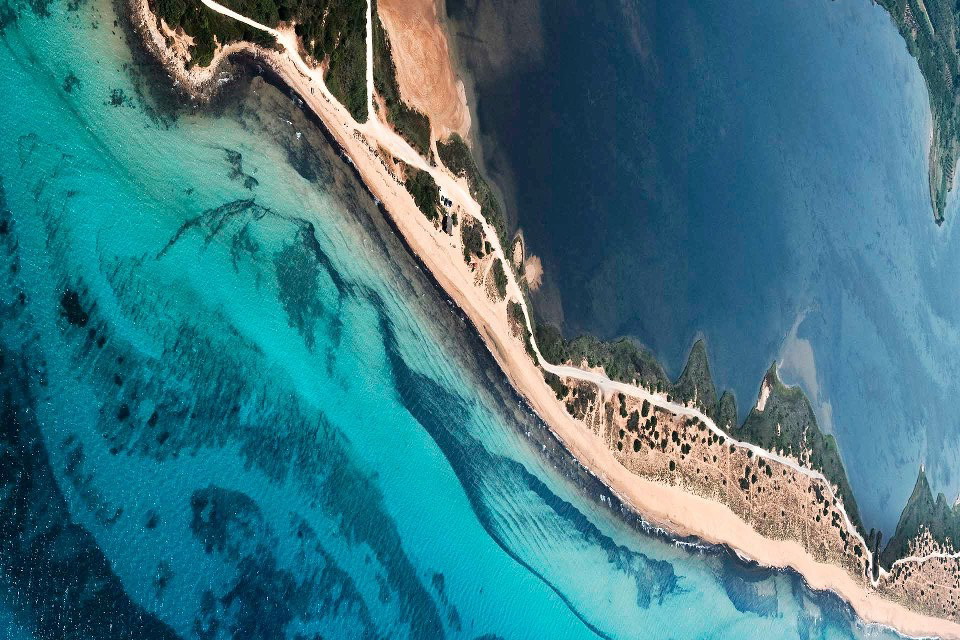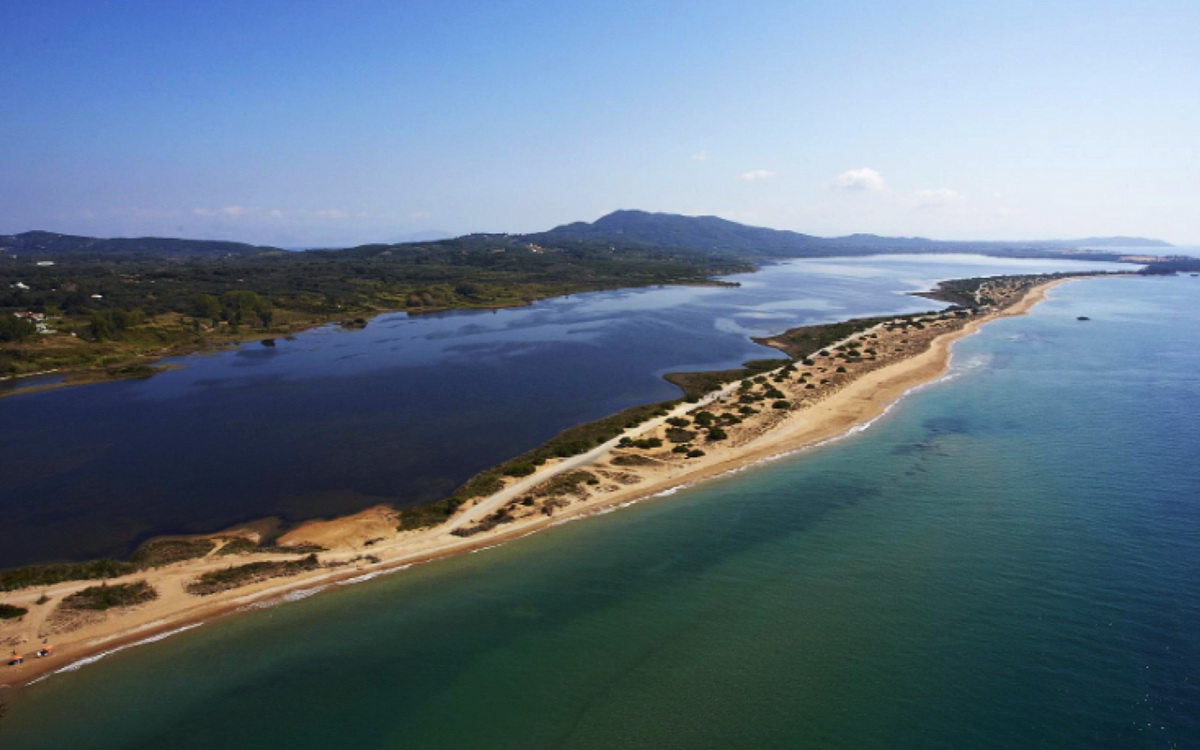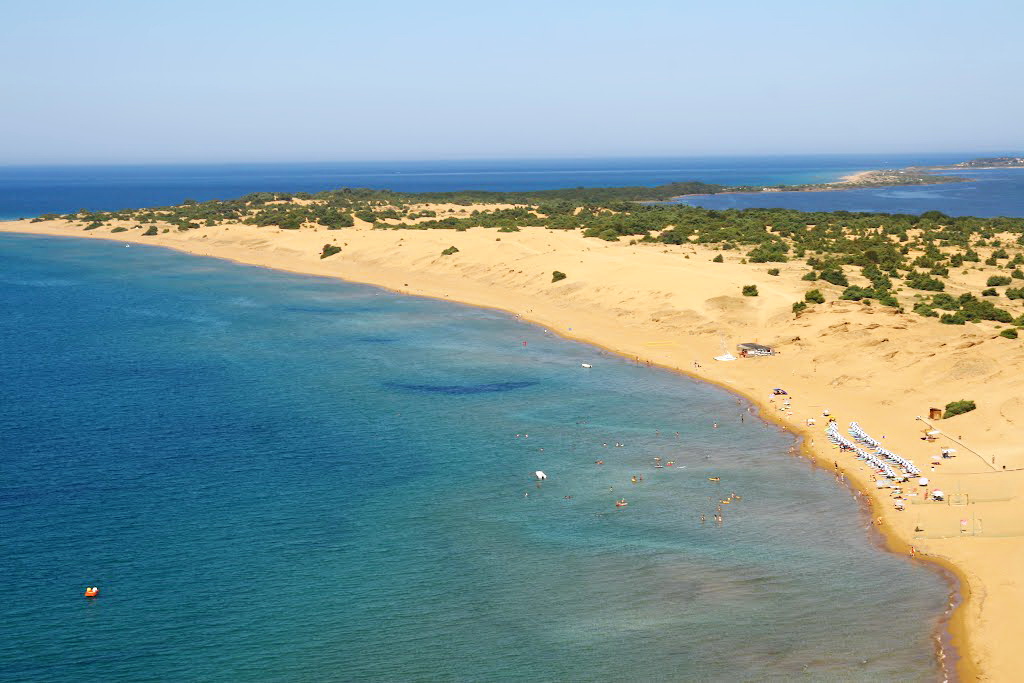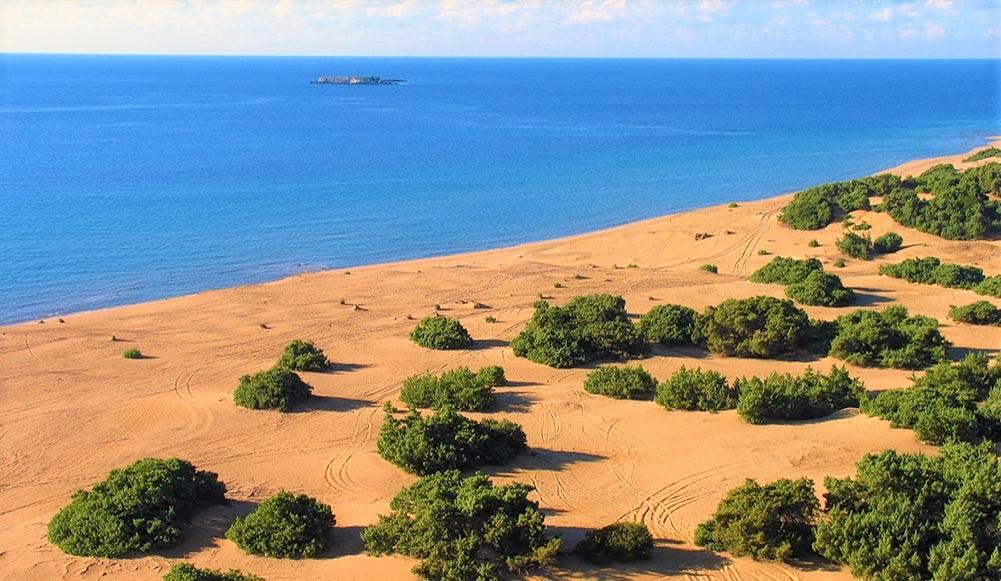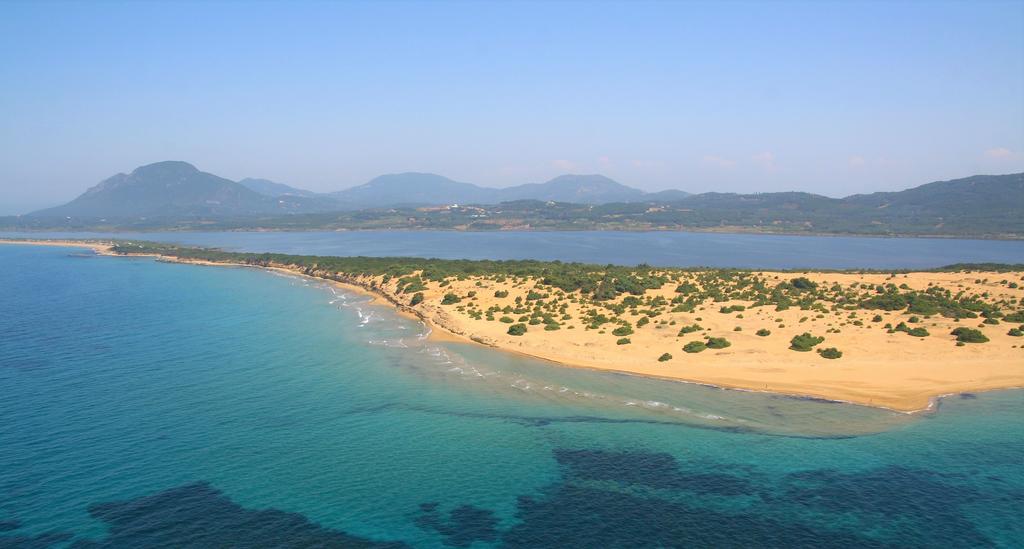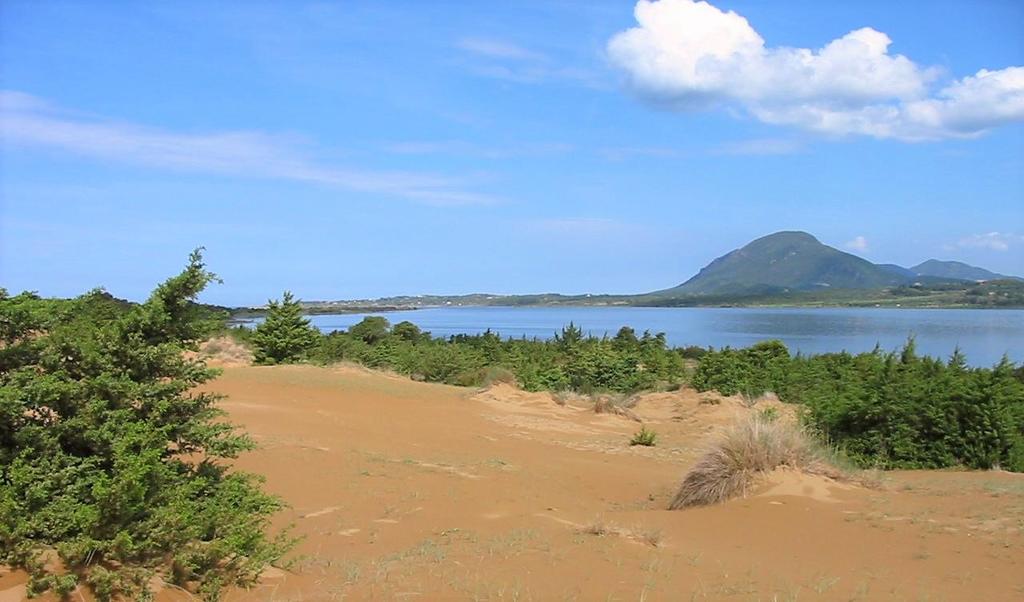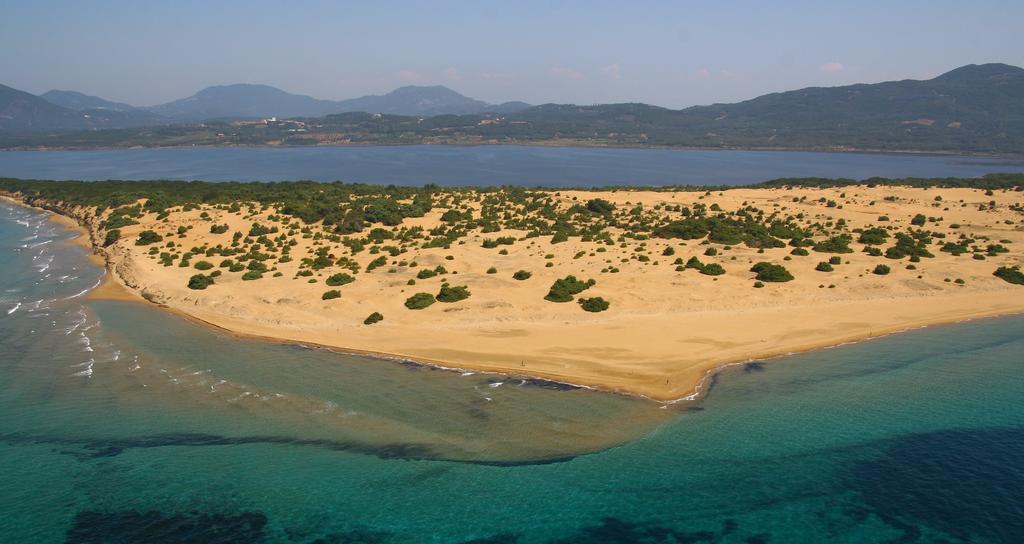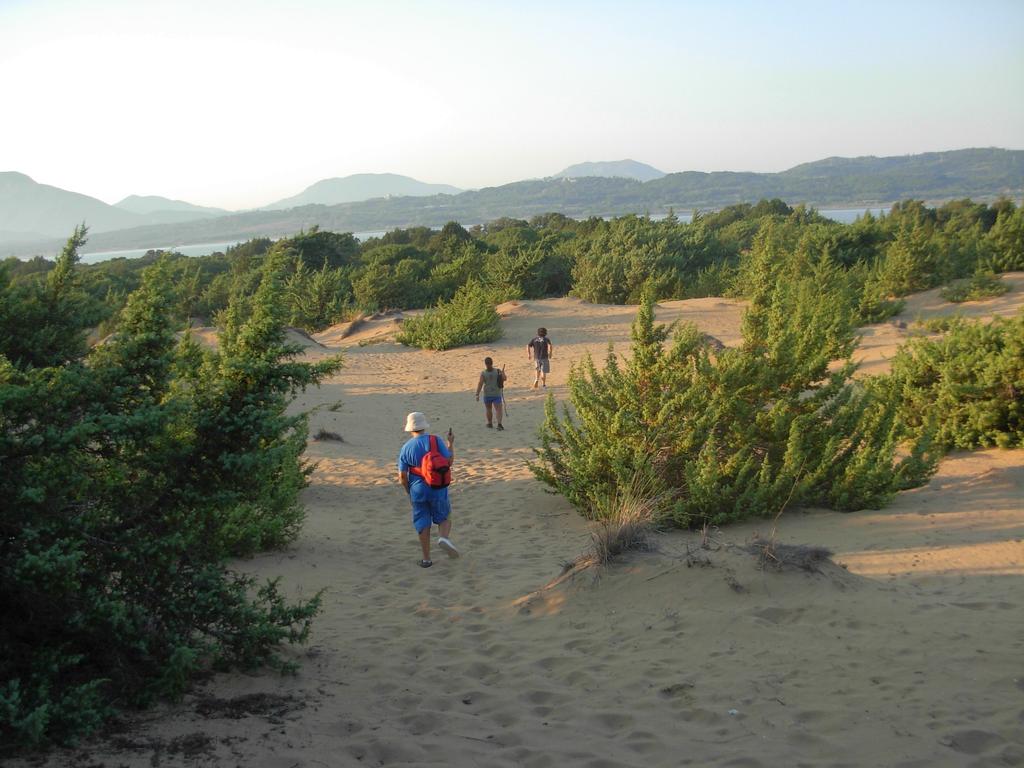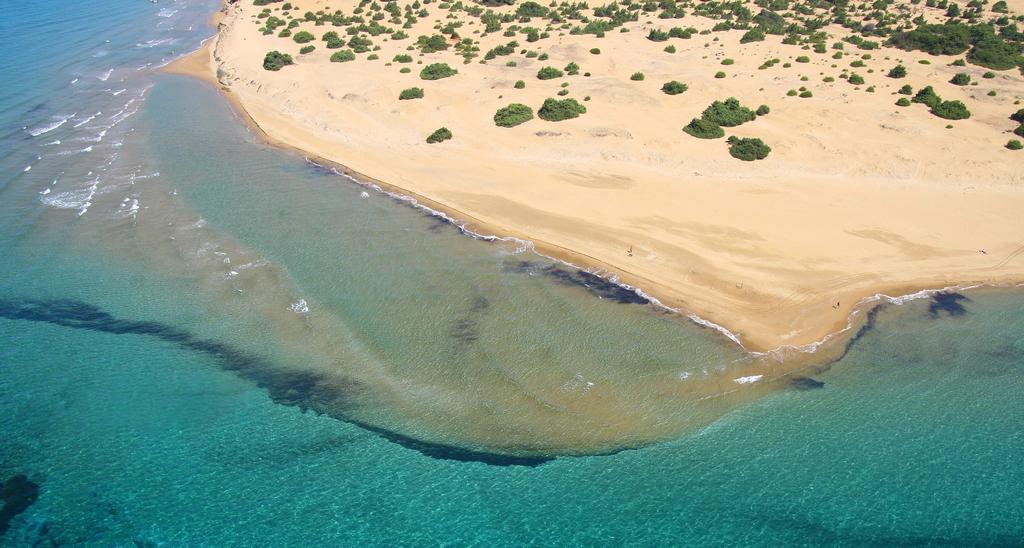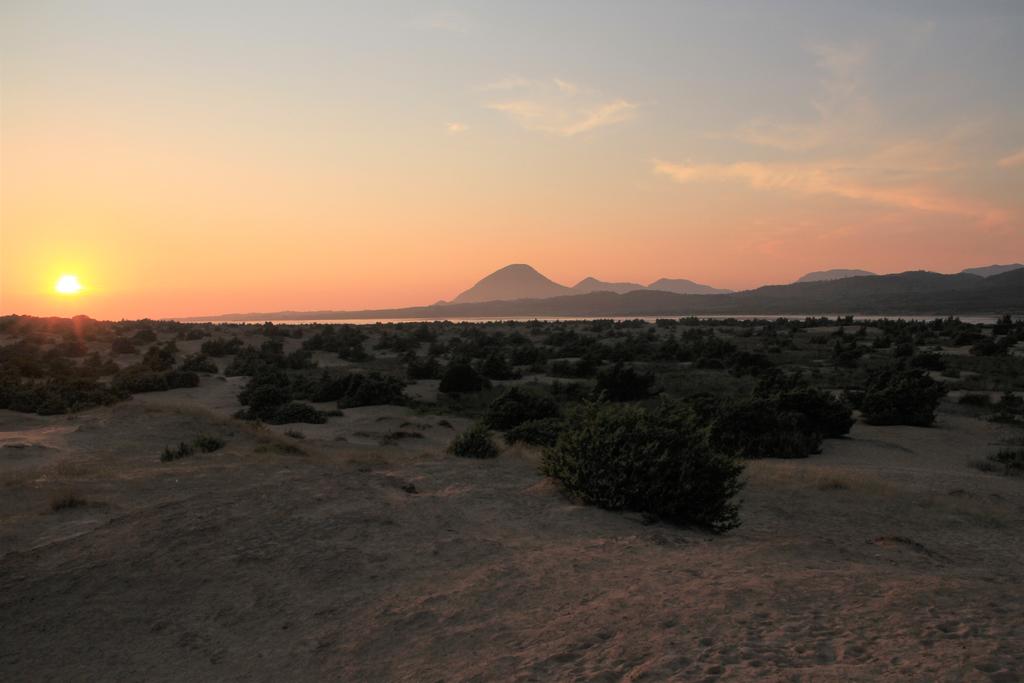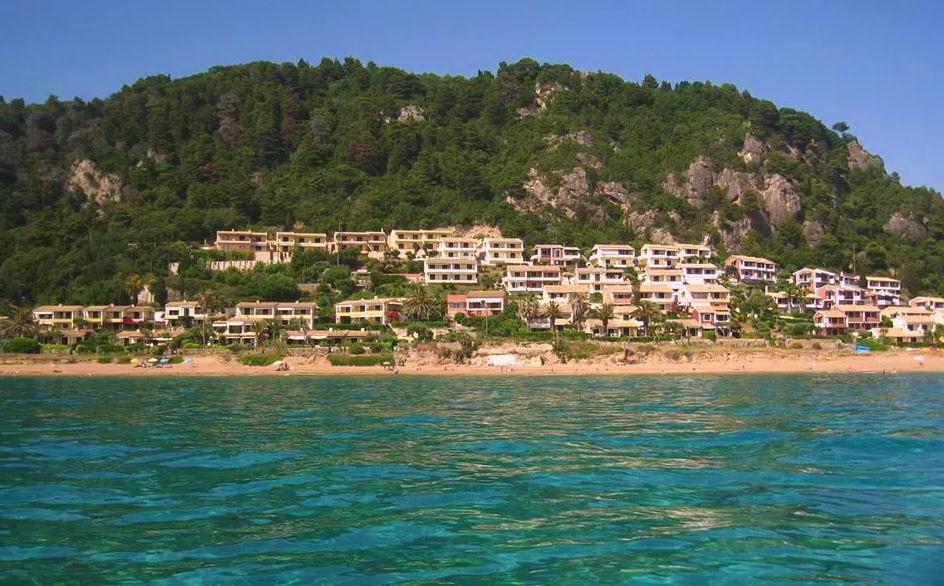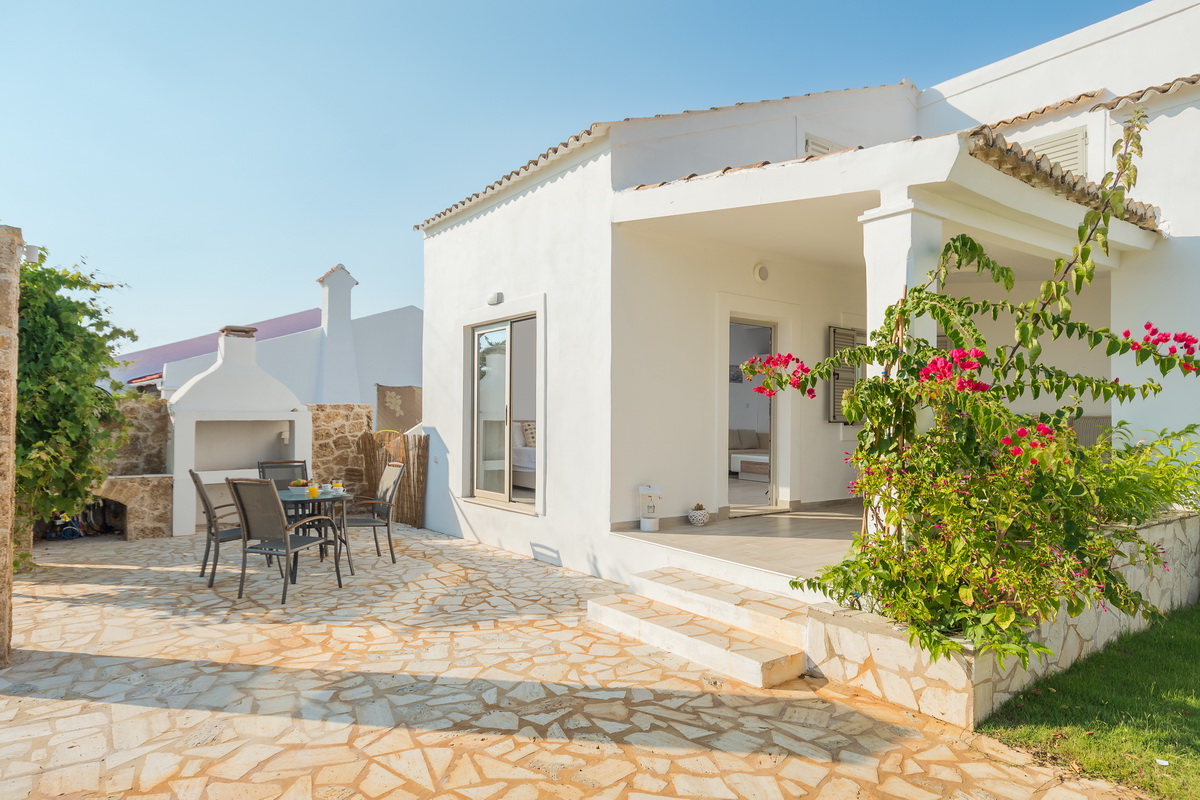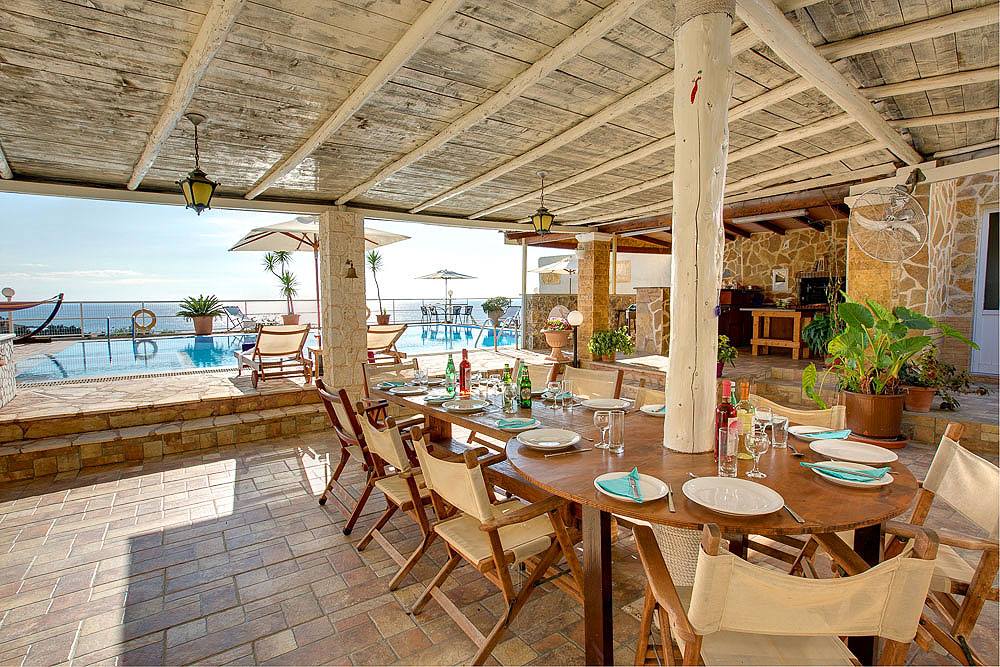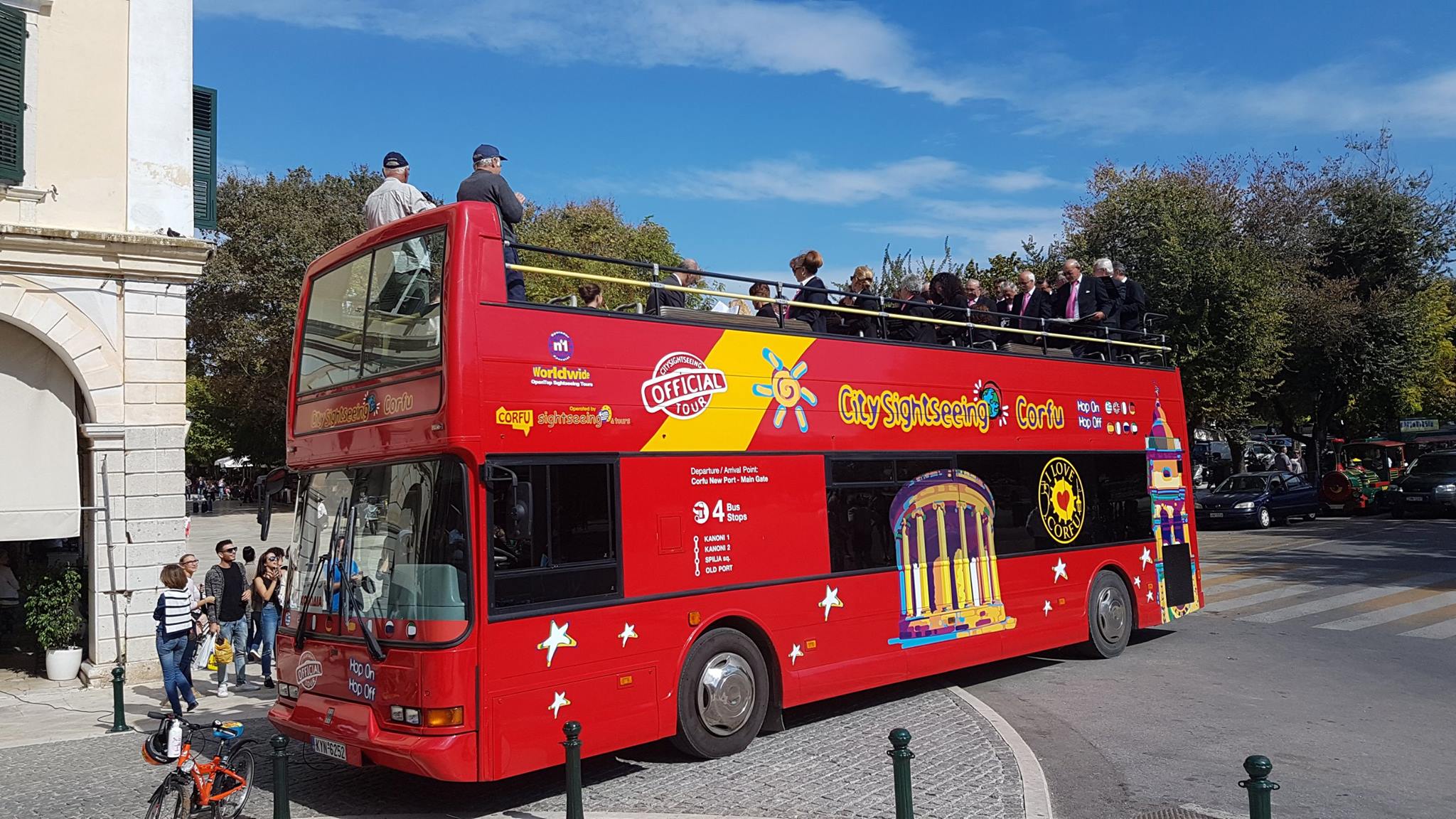South-West Corfu
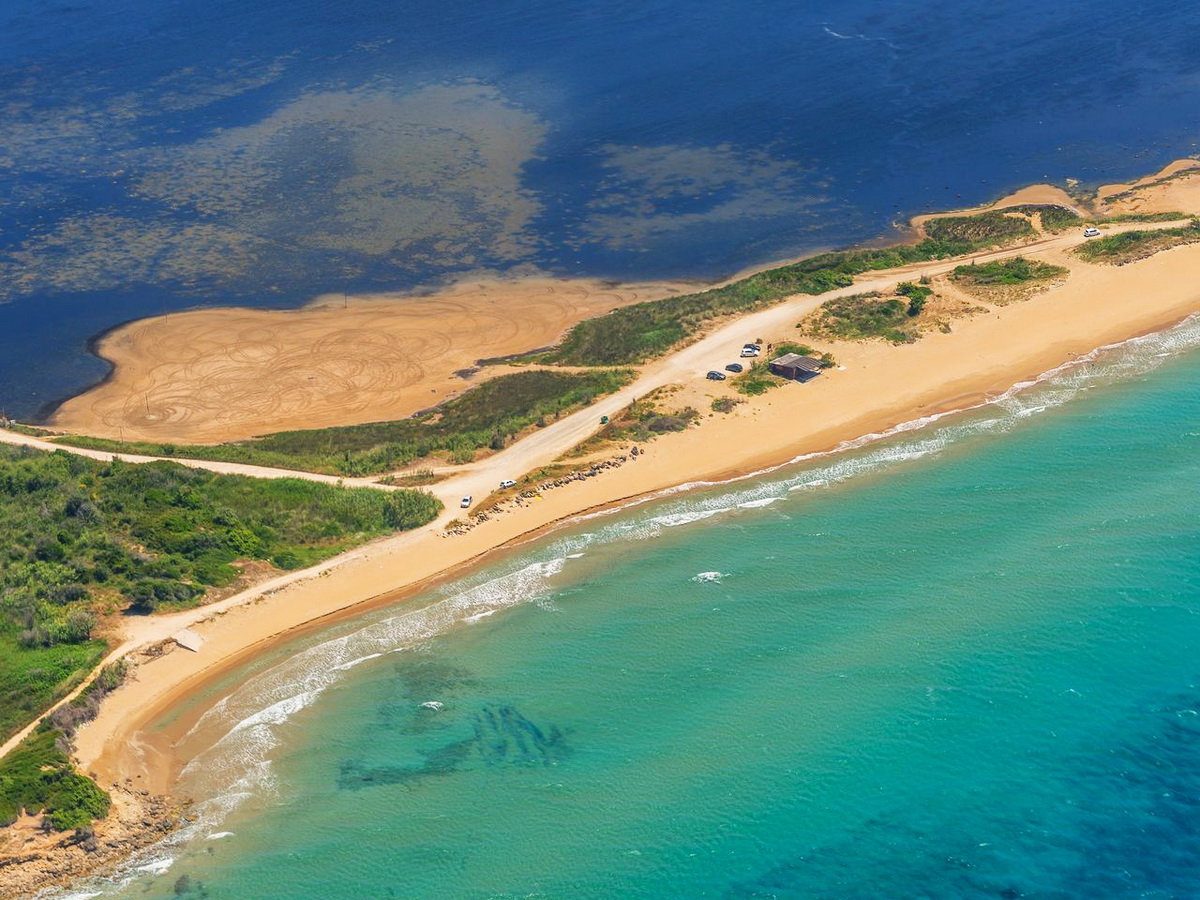
Pelekas: twelve kilometers from town and built near the summit of a beautiful hill at a height of 270 meters, the village is famed for its panoramic view and the splendid sunsets. Here is the ‘Kaiser’s Throne’, where Kaiser Wilhelm II used to come and meditate.
Glyfada: a huge and very popular sandy beach with bars open around the clock, hotels, restaurants, and crowds of people. This is where the PanHellenic volley-ball championships take place.
Kontoyialos: an outstanding beach, a smaller version of Glyfada, with tavernas right at the water’s edge, rooms for rent and a hotel. It can be reached by three different roads.
Yialiskari: On the road, which links Pelekas with Sinarades you will find a turn-off to Yialiskari, a small bay where pine trees run right to the water’s edge. There are two or three taverns, but also lots of visitors from the hotel nearby.
Sinarades: is a large, well-preserved village with buildings from the Byzantine and Venetian eras. Also of interest in the village is a campanile dating from the 17th century (not the one in the square, which is a modern copy of a Venetian one) and a little way further on, up an alley, is an old bakery where bread is still made in the old way and baked in wood-fired ovens. A philharmonic orchestra was founded in Sinarades in 1960, and it takes part in all local events and processions.
Agios Gordis: is a very extensive beach on the west coast and can be considered to belong to both Sinarades and Kato Garouna. Hotels, restaurants and bars fulfill the needs of the many visitors who regularly choose this spot for their holidays. Amongst Agios Gordis’ most impressive features are the rocks at its northern end, sculpted by the waves into works of art. Rocks and pebbles continue on from this end of the beach, overlooked by the imposing cliff of Aerostato. It was formerly known as Vardia (Watchpoint) because, in the days of pirate threats, it was from this point that the locals kept lookout over the western shores. You can get to Aerostato and its shoreline by way of a road at the northern end of Sinarades. At the southern end of Agios Gordis is the famous ‘Ortholithos’, a dramatic free-standing rock rising from the waves, which was mentioned by the writer Iakovas Polilas in his tales.
Myrtiotissa: a rough, steep track runs down from Vatos to Myrtiotissa, a gorgeous little beach which is the favourite of nudists. To the right (north) of the beach is the Monastery of the Blessed Virgin of Myrtiotissa, which was founded in the 14th century by a monk, a Turk who had been converted to Christianity. It owes its name to an icon of the Virgin which was found amongst the myrtle bushes. A coastal path of great botanical interest leads from here to Ermones.
Ermones: is a small bay on Corfu’s western coast, with sheer cliffs and wooded hills. Archaeological excavations have uncovered the remains of a Bronze Age hamlet here, testament to the existence of prehistoric settlers in the area. Guests of the large hotel complex which is built on the hillside can enjoy a wonderful beach, where cold, fresh water flows from a river into the sea. But there is also plenty of room for visitors, with rooms for rent, fish taverns, and plenty of bars.
Gardiki: a low foothill of the Agios Mattheos mountain range on which stand the ruined octagonal walls of a Byzantine fortress. It was probably built during the 13th century, by Michael II, Despot of Epirus, who also built the castle of Angelokastro, at about the same time. It has eight decorated towers, built using materials from ancient times. After Gardaki, the road continues south, becomes a track, and reaches the north-west corner of Lake Korission at Mesavrisi.
Lake Korission/ISSOS: a lagoon, it is long and narrow and extends over an area of 6000 m2 (1500 acres), in which the local communities have applied systematic methods of fish farming. With the Ionian Sea washing across a spit of land on to Halikounas Beach, it is a magical spot, where sea and sand dunes blend, enhanced by fantastic sunsets. The track runs on and ends where the lake empties into the sea. Here, beside the ranger’s cabin with its three guard dogs, there is a small wooden bridge, which carries you into a unique forest where cedars grow on dunes dotted with white lilies and 14 species of orchid. It is not hard to find the footpath through the forest, which leads eventually to the northern end of Agios Georgios Beach. The entire area, from the lake to the far edge of the forest, constitutes an important wetlands habitat, where 126 different kinds of birds have been observed. In just one day, 1700 widgeons and 300 cormorants were counted, while the endangered Great White Egret numbers over 90.
Alonaki: a small natural harbour at the southern tip of Lake Korission, just as lovely as everything else in this region. To reach it, follow the lake road south to a stretch right on the sea, with a view of the bay.
Argyrades: at 33 kilometres from Corfu Town, it is a substantial village with a population of 2000 inhabitants. The alleyways, the arcades and the architectural style of the houses are strongly reminiscent of the Venetian era.
Agios Georgios: just before the village of Argyrades, a road to the right runs down to the beach of Agios Georgios. Essentially Halikounas and Agios Georgios are one huge beach, 10 kilometres in length, with sand dunes, fine sand and shallow water. In such a vast expanse, you can be sure of finding a secluded spot to yourself; even at the height of the tourist season. In the centre of Agios Georgios, though, things are somewhat different: hotels and rented accommodation, restaurants and bars, ski, jet-ski, paragliding, parachuting, volleyball, and, as you can imagine, people everywhere. In the middle of Argyrades a road junction is signposted to Neohoraki, Roumanades, Vassilatika, Kouspades, Korakades and Petriti, all villages on the east coast and all well worth a visit.
Marathias: 5 kilometres beyond Argyrades, it was built at the start of the 20th century by residents of Old Marathias, which once stood opposite on a hill to the east. In 1816, this area suffered an epidemic of plague, and the governor ordered the destruction by fire of dwellings hit by the pestilence. The result of this prophylactic official intervention was that the village of Roumanades was destroyed, while in Marathias a few houses were saved. The people decided to abandon the ruined village, building instead the one which stands today. Continuing along the road, we reach Perivoli, where the church is dedicated to Agii Saranda (Forty Saints), and has frescoes dating from 1704. Roads lead from Marathias and Perivoli to Maltas, a vast beach with all the features of these southern shores – fine sand and shallow water.
| Country | South-West Corfu island, Greece |
|---|





